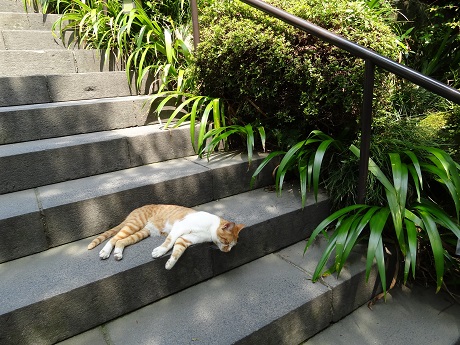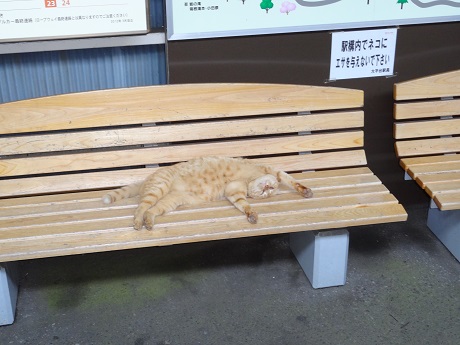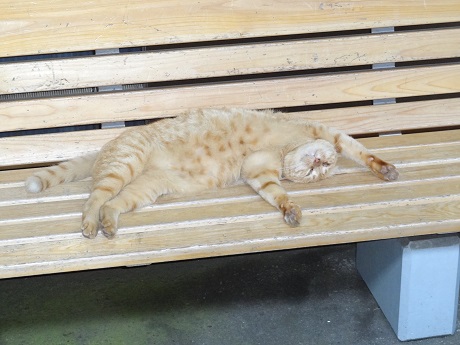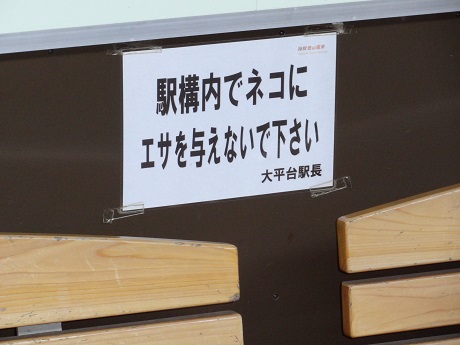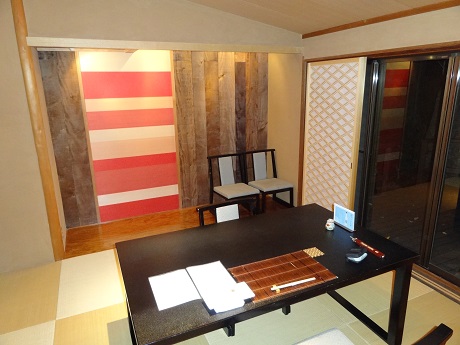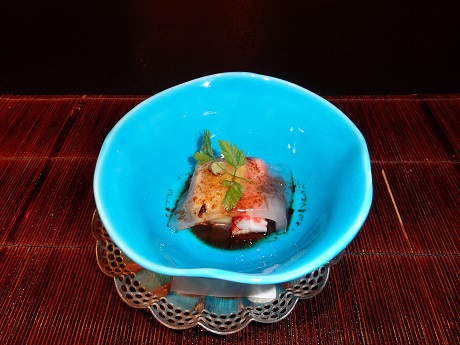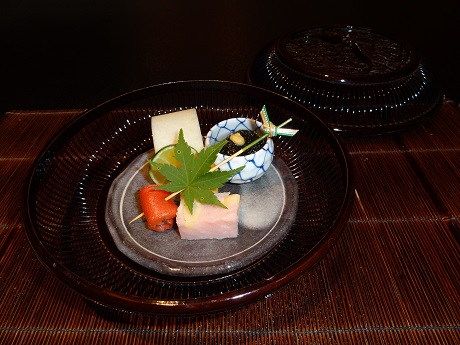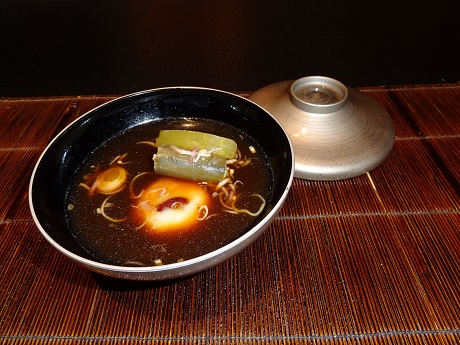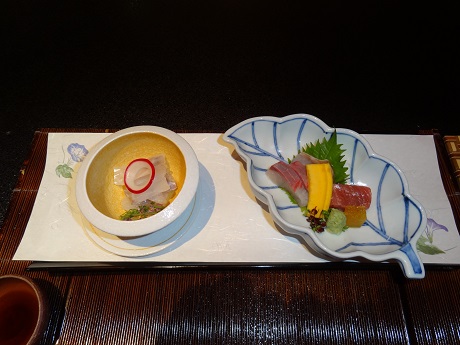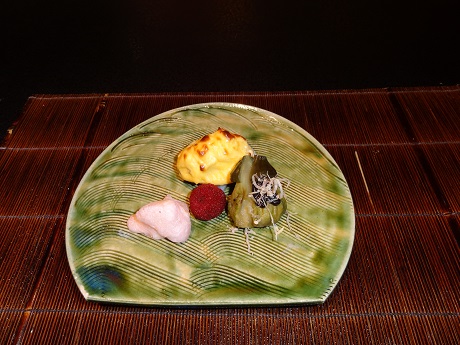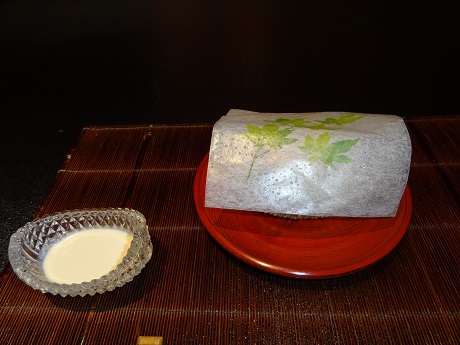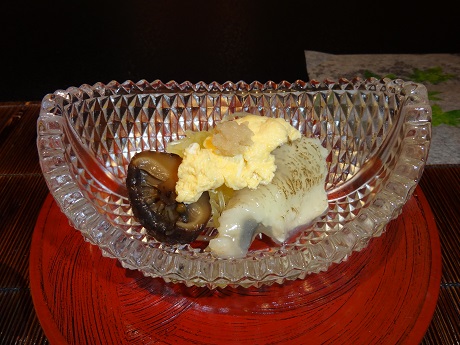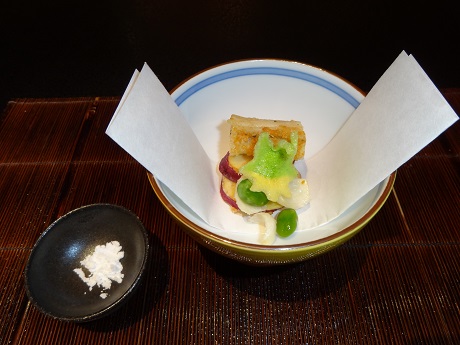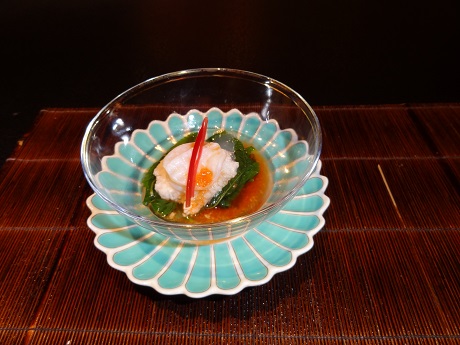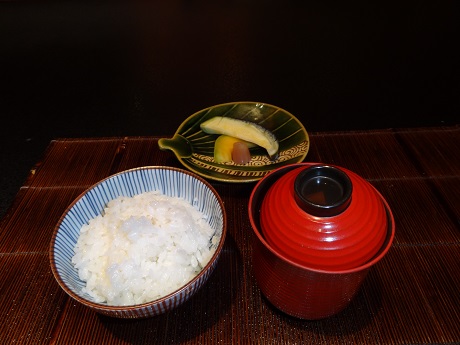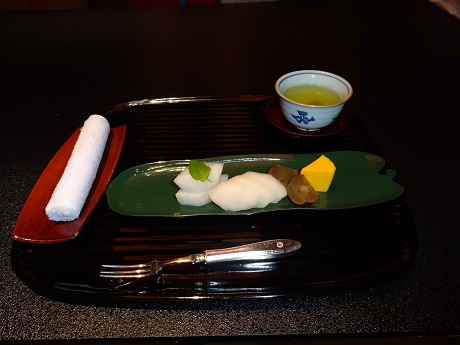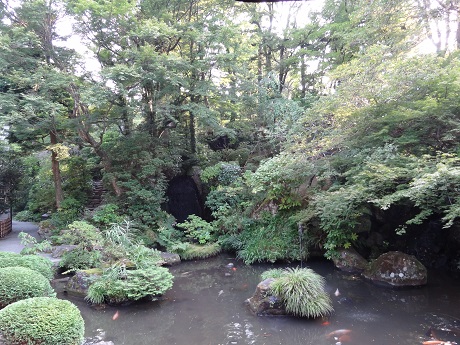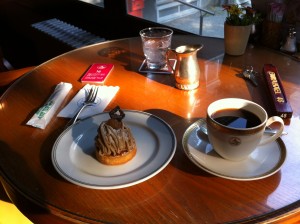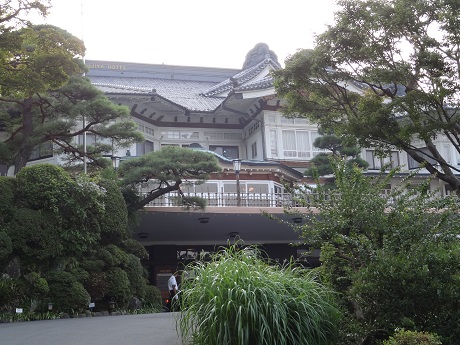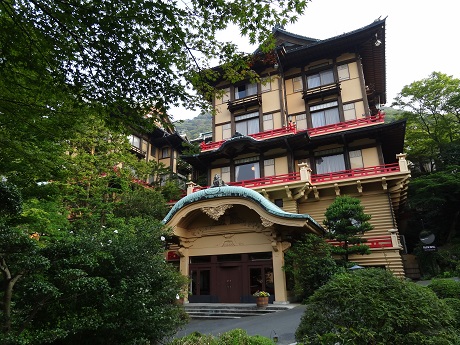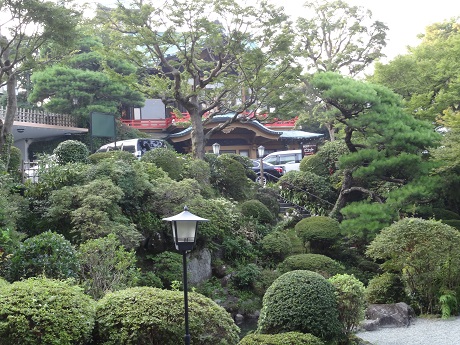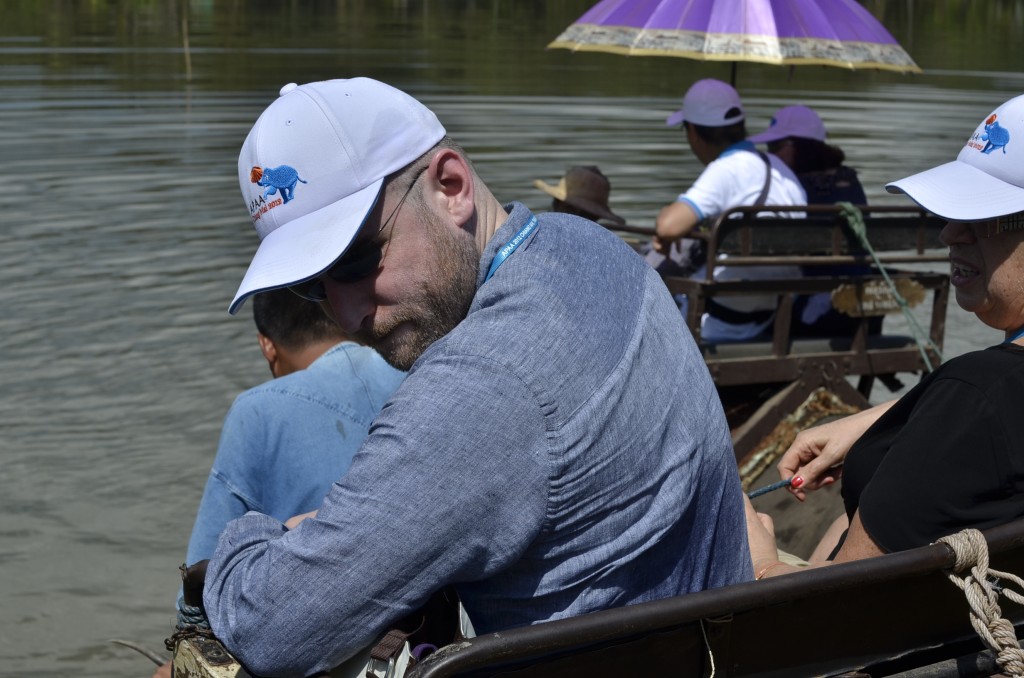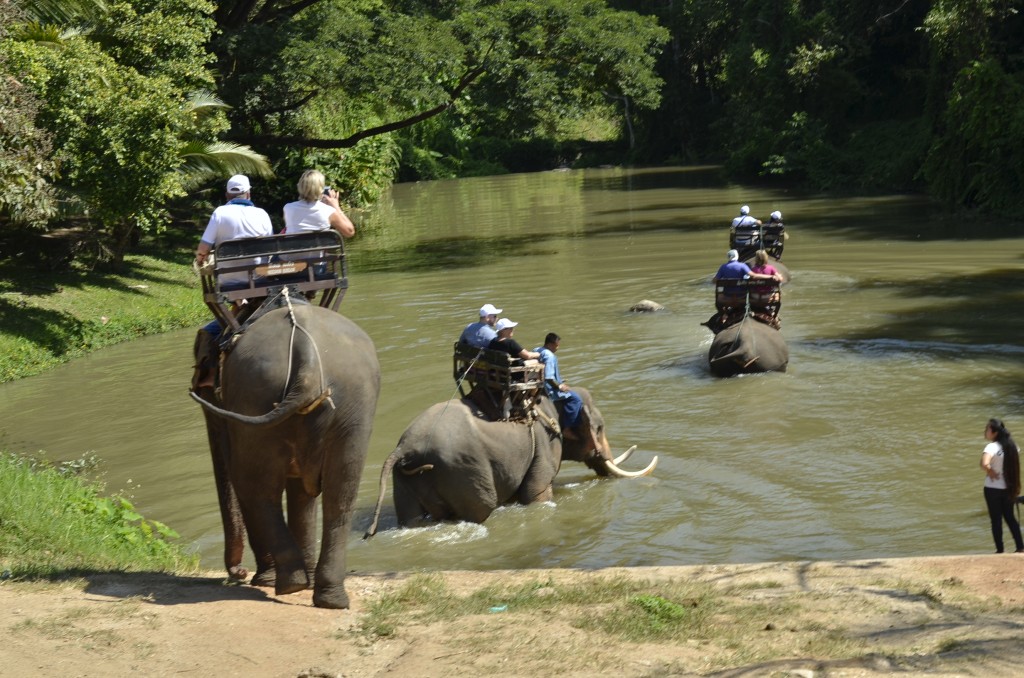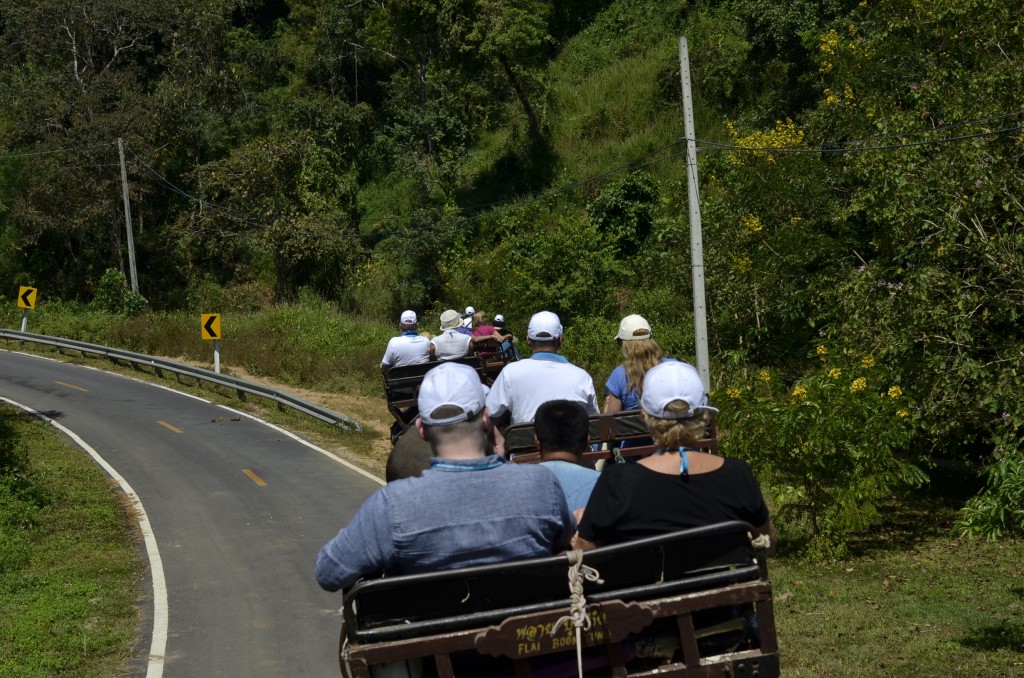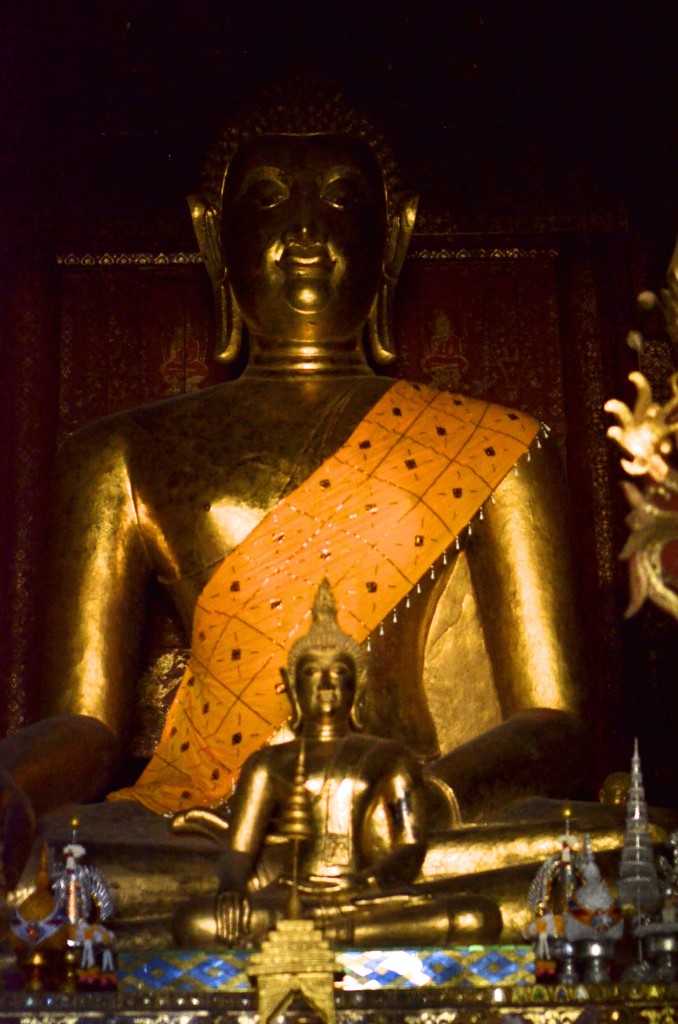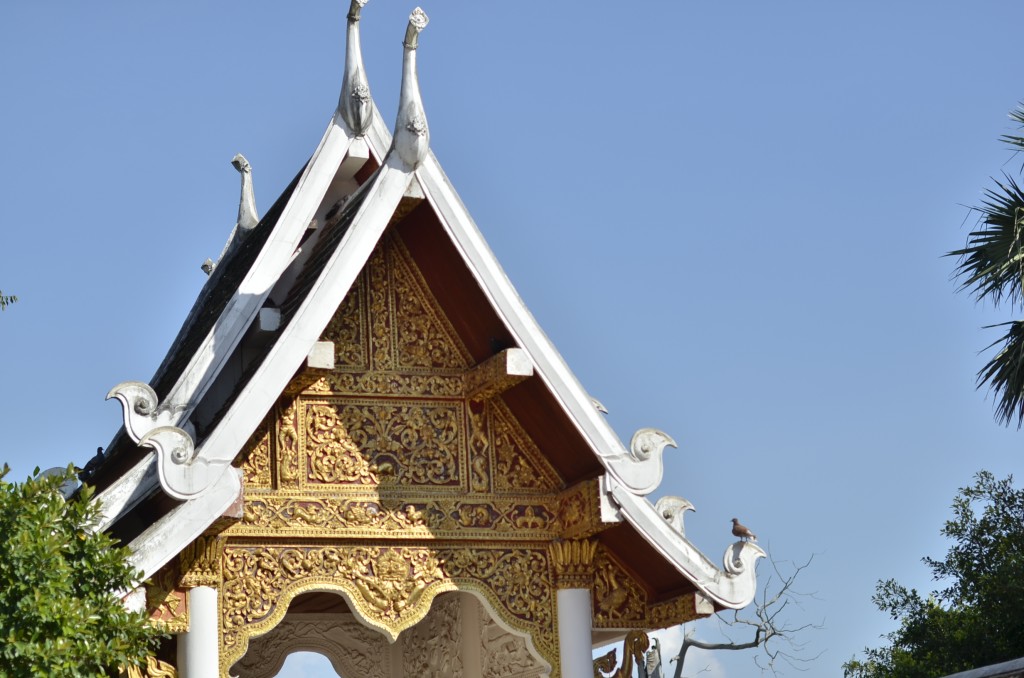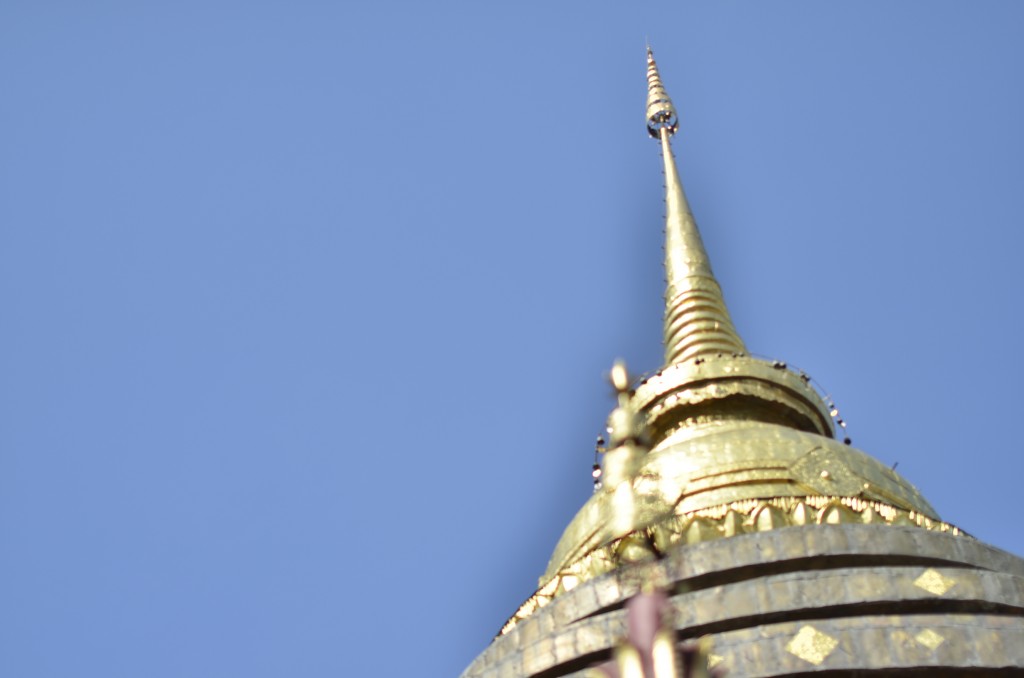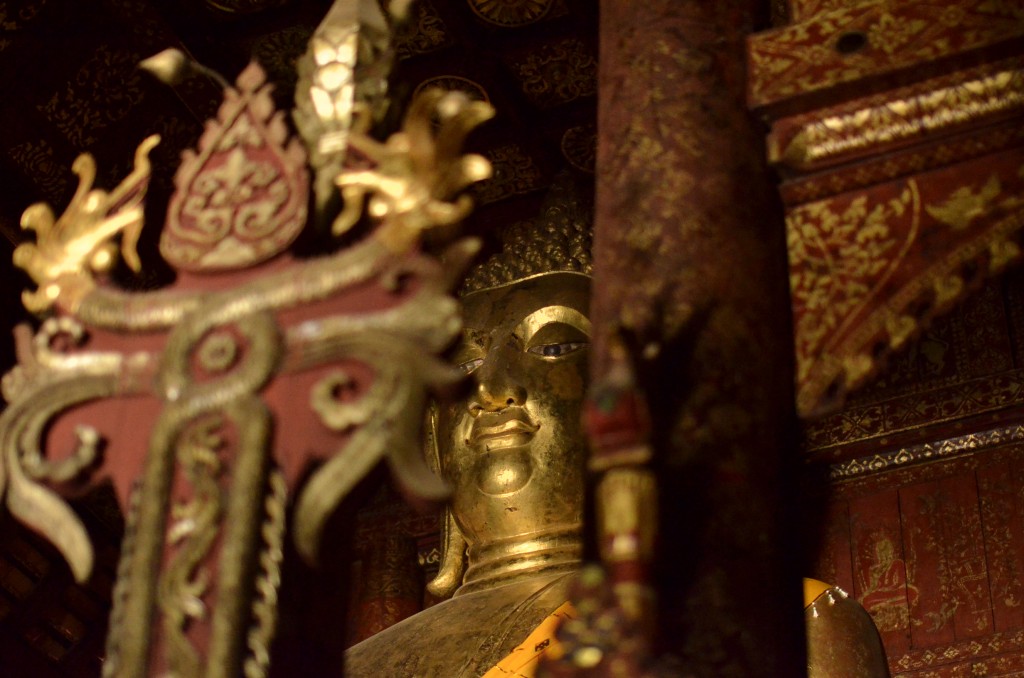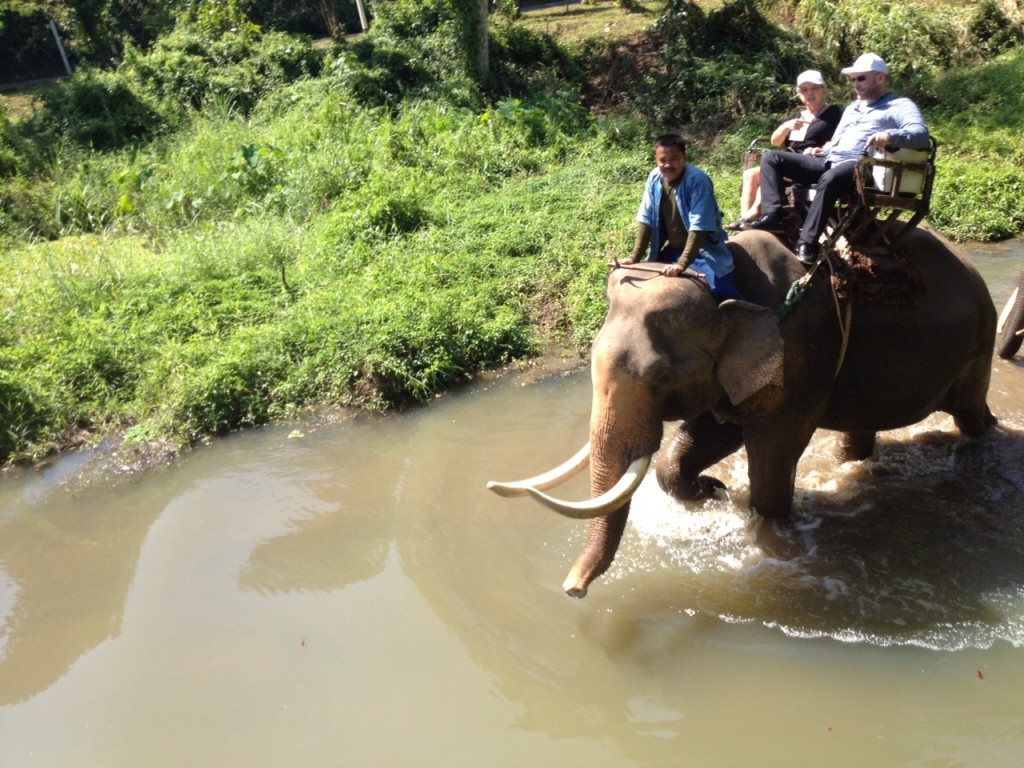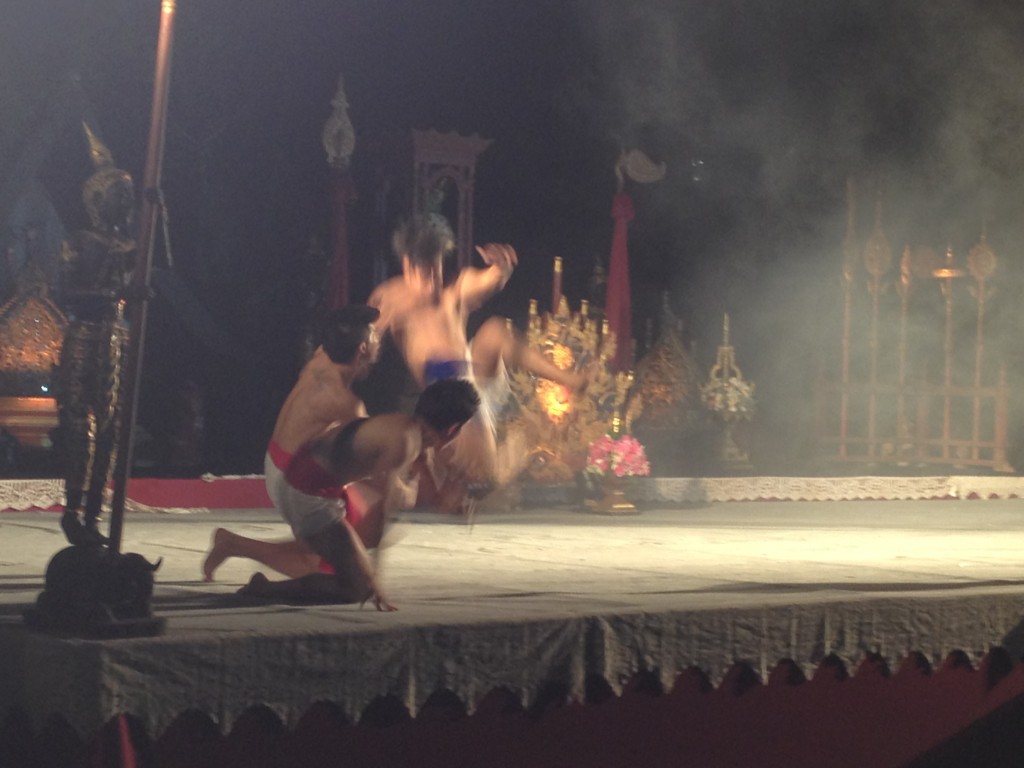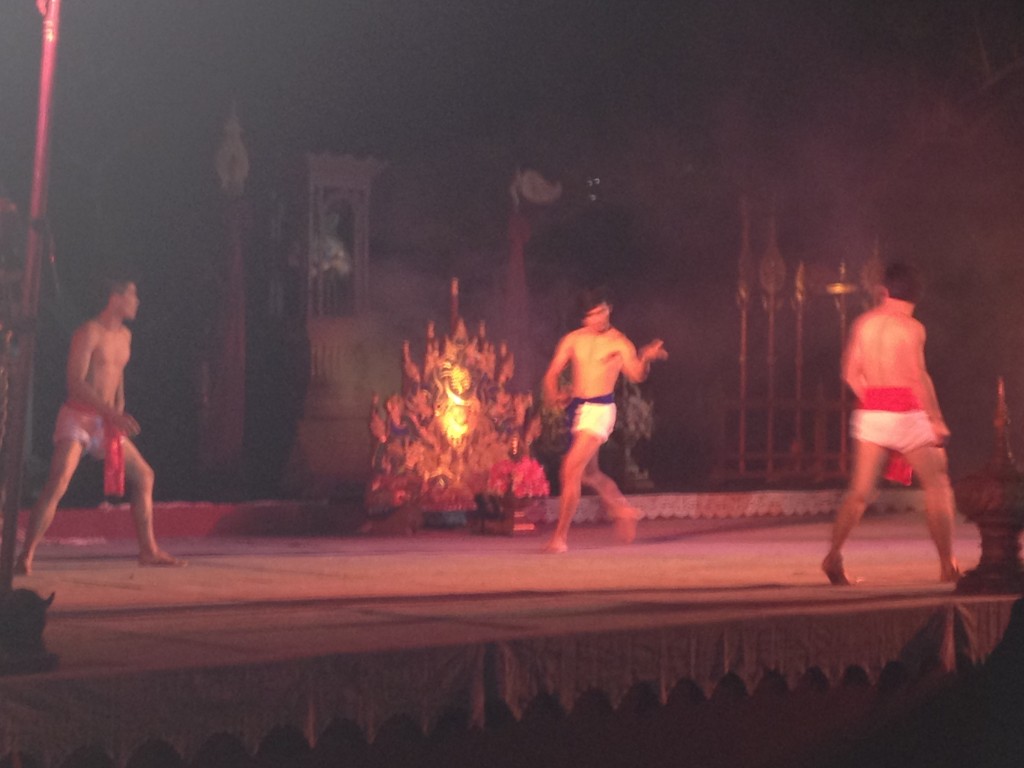‘Travel’ Category
-
The Kabuki
1August 20, 2013 by IPAlchemist
The highlight of my visit to Japan was a trip to the newly rebuilt Kabuki-za in Ginza, where I was kindly taken by my former Japanese teacher Emiko.
I have no pictures, so I am going to have to use words to paint the scene. Bear with me, dear readers.
The Kabuki-za puts on three performances a day, and each performance consists of two plays separated by an interval. Emiko had recommended that we go and see the first performance of the day, which featured two very different pieces – Nozaki-mura (Nozaki Village) and Shunkyo Kagami Jishi (Young Yayoi and the Spirit of the Lion). The style of the two plays is completely different, making the experience a wonderful introduction to Kabuki. I have never before seen Kabuki in Japan, although I did go twice to see Ebizo Ichikawa XI perform at Sadler’s Wells a few years ago (featuring a performance of Fujimusume – “Wisteria maiden”, and another play Kasane). But neither piece at the Kabuki-za was at all like anything that I saw then – there being many strands of the Kabuki tradition and the experience of each one being (to me at least) quite distinct.
Emiko had been keen that I see the famous Kabuki actor Kankuro Nakamura perform the lion dance in the second piece. His brother Shichinosuke would take over the part from the day after we went. But the same Shichinosuke performed one of the main onagata (man playing female) roles in the first piece.
Do follow the above links for synopses of the two plays – I won’t repeat here. Suffice to say for present purposes that Nozaki-mura originated as a bunraku (puppet theatre) performance and therefore is accompanied by the same shamisen and chanting performers as bunraku is. It features a love triangle with a (to my mind rather pathetic and selfish) man (called Hisamatsu) being engaged to a girl (Omitsu) to whose family he is indebted, while being in love with his boss’s daughter (Osome, who turns out to be pregnant with his child).
I was utterly transfixed by both Osome and Omitsu for completely different reasons. Osome (played by Shichinosuke) was absolutely stunning – when she appeared on the hanamichi wearing a gorgeous purple kimono, the whole audience literally gasped. Omitsu is portrayed as plainer, as the plot requires, but I was captivated by her deft and agile movements, for example as she practised applying makeup, and as she chopped a daikon. She was so expressive as well, in particular as she showed her displeasure at the unwelcome arrival of her love rival.
I was also very struck by the fact that the most bawdy comic part of the piece, namely the banter between two palanquin bearers, occurs precisely at the most emotion-laden scene, and not separated from it. I think Shakespearean tragedy employs similar juxtaposition of the tragic and the comic for heightened effect of the emotional intensity.
There is a lot less going on in the second piece in terms of plot, and really the play seems to be about the presentation of some set piece dances. The musical style is completely different and is called “nagauta“, featuring a large musical ensemble of shamisens, drums, flutes, and chanters, all in stiff formal dress. A dancing maiden becomes possessed by the spirit of a lion god, and so reappears in a fantastical outfit with a mane-like hair which at the back is almost full-body length. The movements of the lion contrast sharply with two butterfly dancers (played by two young men) who generally flap about while the lion is doing his thing. I don’t think that you need to be any particular kabuki expert to really enjoy the beauty of this kind of performance.
Kabuki has a reputation of being inaccessible, but, particularly with the excellent English in-ear commentary, I did not find it at all hard to follow what was going on, and to feel an appreciation of the extraordinary talents and abilities of the performers, as well as a very human response to the characters in the first, more narrative, piece. I am sure that there will have been layers of subtlety that I missed, but I would really encourage anyone to go and experience this wonderful art form for themselves if they get a chance.
Emiko, who is an expert on Japanese Noh drama, informed me that the lion dance piece is also performed in the Noh tradition, but that “in Noh, we do it with masks”. I love “we do it with masks” as the distilled quintessence of the distinction between the earlier, more formal, Noh theatre, and the later Kabuki tradition. (For my feelings about Noh, which I also love, see my earlier post here.)
I shall definitely be looking out for the next opportunity to see any Kabuki drama, whether in Europe or in Japan.
Category Leisure, Music, Travel | Tags: kabuki, Kagami Jishi, Kankuro Nakamura, Nozakimura, Shichinosuke Nakamura
-
The cats of Hakone
1August 17, 2013 by IPAlchemist
This is a little post for my sister Kerry.
There were some adorable cats in Hakone, and I managed a couple of pictures which I would like to share.
The first cat seemed to live in the Fujiya hotel. It was very tame and seemed to like being stroked (or perhaps it was too hot for it to run away). I took some pictures of the hotel on the last day, and it was lying on the steps leading up to the hotel.
Fujiya hotel cat
The next cat was at Ohiradai station on the Hakone Tozan Railway, that I saw on the way back to Tokyo after the end of my stay in Hakone. What was particularly adorable, besides the wonderfully stretched out pose (like the Fujiya cat, this one didn’t look like it moved much) was the fact that it was directly underneath a sign that said to please not feed the station cat. I present for you enjoyment the panoramic view and close-ups of the moggy itself and the sign in question.
Category Leisure, Travel | Tags: cat, Fujiya Hotel, Hakone, Hakone Tozan Railway, Ohiradai station
-
The Fujiya Hotel 3 – Kaiseki Dinner at Kikka-so
1August 9, 2013 by IPAlchemist
Even though the Fujiya is not, as I have said, Western, but rather Western-influenced Japanese, it seems it could not stay even that way for long, and so after WW II it annexed a Japanese-style lodging that became the Kikka-so Inn. Apparently the building was originally built as an Imperial villa in 1895 and was used by the Imperial royal family until it was purchased by the Fujiya. It must have been very odd in the first half of the 20th century having Japanese royalty staying just metres away from a busy resort hotel that was actively attracting customers from all over Japan and the world. So, having eaten my first night at the flagship restaurant of the hotel which served exquisite French food (of which alas no photos were taken), tonight it was off to the Kikka-so for a Japanese kaiseki dinner. Kaiseki is basically a tasting menu that is reminiscent of nouvelle cuisine because of the simple fact that it inspired it. It has very strict rules, however, and the courses follow a set and predictable order. The food is highly seasonal, and so if you have a kaiseki dinner at two completely different establishments on consecutive days, you will likely find remarkable similarities in what you receive. I am no expert, but I think that the basic order generally runs something like this (the terms are my own): Pre-appetiser Appetiser Soup (usually clear) Sashimi Grilled dish Steamed dish Fried dish Vinegared dish Rice, miso soup, pickles Dessert (usually fruit and/or sorbet) But look it up on ‘tinternet if you want to know more. (By the way I am not talking about the “kaiseki” which has something to do with the kanji for “stone” and is related to the tea ceremony – as my Japanese teacher always used to say – “different kanji”). I have never before photographed an entire kaiseki meal, but this seemed the perfect chance as I was by myself. Also, somewhat unexpectedly, I was in a private room “Sazanka” which was delightful. So here is the story in pictures and brief explanation.
The room “Sazanka” in the Kikka-so Inn
Pre-appetiser
The pre-appetiser contained crab, corn tofu and a small slice of corn, aloe (which I think is the gelatinous material on the top) and balsamic vinegar.
Appetiser
The appetiser is a plateful of little mouthfuls of gorgeousness. At the back, covered in a strip of apple, is a piece of sushi with (apparently) barracuda on the top. The maple leaf is just for decoration.
Soup
The soup is usually clear, but this one was not. In the middle is a ball of rice cake containing fish. There is a translucent green vegetable that I think is taro stem.
Sashimi is raw fish (sushi isn’t – it may include raw fish but it is the rice underneath that is characteristically sushi). Bottom left is the bowl of soya sauce for dipping. Tuna is almost always present, and you can see it there on the right. I think the one on the left is called suzuki but I am open to correction. And yes that is a slice of radish with the middle cut out that you can see on top. Sashimi is almost always served on top of thinly sliced daikon (giant radish) with a shiso leaf on top, which is edible and delicious. The green blob is wasabi – Japanese horseradish.
Grilled dish
At the top was a delicious confection of abalone, cheese and edamame (kind of bean) served in the abalone shell. I was assured that it contained “bonito guts” but this ingredient did not stand out. On the left the pink thing is lily bulb coated in plum paste, and the red thing in the middle is a pickled sour plum. On the right is aubergine with miso paste.
Steamed dish – covered
Steamed dish – uncovered
This steamed dish was a cold one. It looked so lovely with the pretty paper cover that I photographed it like that, and then close-up with the cover off. The fish is called “hamo”, which I think is a kind of eel, and that is a shiitake that you can see. The sauce was delicious and contained sesame and other yummies.
Fried dish
The fried dish was a delight. The beans are apparently not edamame but gindan – ginkgo nuts. The thing on the top, surprisingly, was a kind of rice cracker. At the back was a piece of eel, and underneath are two slices of sweet potato, stuffed with some kind of minced prawn, and then fried.
Vinegared dish
This was not a triumph. On the top you can see a scallop which was quite nice, and there was a chilli sauce which was interesting, but the whole thing sat in a slimy sauce and the translucent gelatinous thing you can see is konyaku, which is really best left uneaten.
Nearly the end
You know you are nearly at the end of a Japanese meal when they serve the rice, miso soup and pickles. This time the miso soup was replaced by a clear soup, unusually, but you can’t see that because I took the photograph with the lid on. Today’s pickles featured ginger, aubergine, and melon. No, really.
Dessert
And then the dessert tray. Fruit, green tea, and a lovely ice-cold towel. (Did I say I have been sweltering all day? NEVER come to Japan in the summer.)
So that, folks, is a kaiseki meal. Gochisou-sama deshita.
Category Leisure, Travel | Tags: dinner, Fujiya Hotel, kaiseki, Kikka-so
-
The Fujiya Hotel 2 – Tea on the Verandah
1August 9, 2013 by IPAlchemist
The place to have tea at the Fujiya is called the Orchid Lounge, but this name gives completely the wrong impression. It is in fact a verandah running along the back of the hotel, glassed in, with a single row of tables set diagonally against the windows. There is a short return with only two small round tables, and coincidentally that is where I sat both the first time I came with Keizo, and today.
There is a beautiful view of a small Japanese garden – pond, koi carp (you can see them in the photo), the lot, that is simply exquisite. I have tried to photograph it but fear that two dimensions really does not do it justice.
Above the main tables, and visible from my seat, is the back of the hotel, including a view of the window of my room. Mine is first floor (UK counting – Japanese “ni-kai”), slightly right of the centre of the picture, the window before the double doors. The green pipe that you see to the right of the double doors, incidentally, is an ancient firefighting system and inside there is a roll of flexible hose that can be connected to the end of the pipe.
View of rear of main building – including my room!
The menu reflects typically those things that Japanese coffee shops offer, entirely different from what you would find in any other country. Not a scone in sight – instead specials were French toast (no it wasn’t breakfast time), cinnamon toast (honestly, it really wasn’t breakfast time), and slushies – ice with flavoured syrup poured over. I plumped for a cake known as as Mont Blanc – I have never seen them outside Japan but here they are everywhere. In the less attractive form that I first came across the animal it featured only cream and marron glace paste (a smooth sweet paste made from sweet chestnuts), but he Fujiya version was a triumph – a sponge base, and identifiable bits of real (and less sweet) chestnut made it simply magnificent.
There was then just a short time to rest until dinner, which was quite a different affair.
Category Leisure, Travel | Tags: afternoon tea, Fujiya Hotel, Mont Blanc, Orchid Lounge
-
The Fujiya Hotel Part 1
0August 9, 2013 by IPAlchemist
How shall I write the praises of the Fujiya Hotel? I was completely captivated by it the first time I came across it, a few years ago when my friend Keizo was showing me around Hakone.
You need I think to consider a little the history. The founder Sennosuke Yamaguchi travelled to the USA and Europe and learned something of the Western hotelier tradition in the early Meiji period, and founded his hotel in 1878. It was apparently the first western-style hotel in Japan (if this is not strictly true it must have been one of the first), in the resort area of Hakone, popular even then. The original building burned down in the Miyanoshita fire in 1883, so the current main building dates from 1891. War, earthquake and fire means that even in a country so historic as Japan, Meiji period buildings are something of a rarity, so it is for me an enormous joy to be staying in an original Meiji building.
When we say “Western-style” we mean “Japanese interpretation of Western style” – it does not look anything like anything one might find in the actual West. The original building and most of the later additions are actually very Japanese in character, although with clear western influences. The result for me seems like a Japanese re-interpretation of a Swiss chalet.
Buildings were added in the late Meiji and Taisho periods (early 20th century), the former just after Japan’s success in the Russo-Japanese war, but I am most drawn by the two phases of later additions – one in the early Showa period, when Japan was expanding its empire in east Asia, and the second in the 1960s, when Japan was rebuilding itself. Through all these turbulent times, the Fujiya was trying to bring rest and relaxation to those in need. There is a museum in the basement chronicling some of the history, including a visit from the Showa Emperor himself in the 1960s. What it must have been like to be visited by a being sometime considered to be divine.
Although setting out to be a Western style hotel, the Fujiya is in fact based around that most Japanese of leisure attractions – the onsen or hot spring. That is what Hakone is famous for, and that is what you get at the Fujiya. There is a small public bath (separated by gender), a large onsen swimming pool that is mixed, and for which bathing costumes are required, but then the crowning glory is onsen water piped into the bath in your own room’s bathroom, through what appears to be genuine Meiji era plumbing. Guests are advised that the hot water can take up to 10 minutes to arrive. I think it actually takes longer.
The buildings are caked in layers of paint; modern additions such as electricity, air conditioning and internet are delivered in conduits attached to the original structure; and yet… And yet… The historic charm of years of people staying and relaxing here oozes enticingly out of every beam, windowframe, and wooden floortile.
The service, while certainly better than anything in hotels in London, does not quite achieve the effortlessly inconspicuous ideal of the Okura, but you have to pity staff who must deal, displaying Japanese politeness, with not only huge parties of staying guests, but also streams of tourists who come, alone or in groups, like Keizo and I did those years ago, just to ogle and perhaps have tea.
The building itself is very hard to photograph, set as it is upon a hill, and obscured from most directions by trees, but I will have a go.
The Main Building 1891
The Flower Palace 1936
The Restaurant – added 1930
The feeling of having got away from it all is greatly increased by choosing the correct way to arrive. Short it is not – it took a full four hours from Narita airport. The route is this: limousine bus to Shinjuku Station bus station; Odakyu railway Romance Car to Hakone Yumoto, and then Tozan railway three stops to Miyanoshita. It is this last bit that makes it all worthwhile – the train ascends nearly 500m in altitude in a series of 3 switchbacks, at each one of which the two drivers swap ends, climbing though thick vegetation, featuring densely packed hydrangeas. It was glorious. Then you just have to heft your luggage downhill then uphill for about 500m and then you are there.
A rather less welcome reminder of having got away from it all is the discovery that the nearby ATM does not accept foreign issued credit cards, followed by being politely informed by the hotel staff that they do not advance cash on cards, that there is no suitable ATM nearby, and that the nearest one that can be used is at Miyanoshita Post Office, not walkable, requiring a train, bus or taxi journey. Oh and the machine only functions until 6pm.
The odd thing is that despite the remote feeling, it is actually not remote at all by any objective standard. It is on the route of the old Tokaido road – the main route from Tokyo to Kyoto, and the current Japanese Route 1. So it is actually about as well connected as it is possible to be and still be apparently in the middle of nowhere. The road, despite its impressive moniker, is at this stretch only single carriageway and very twisty.
The main business of the day, however, was to have another tea like the one that had first enchanted me so much. So that is the subject of my next post.
Category Leisure, Travel | Tags: Fujiya Hotel, Hakone, Japan, Miyanoshita, tozan railway
-
Visiting Tokyo and Kyoto – Darren’s Recommendations
0November 17, 2012 by IPAlchemist
Dr Jess, known on Twitter as @JessTheChemist, is off to Japan to go to a conference in Kyoto, and has asked for recommendations while there. It is not the first time that I have been asked for such suggestions, as I lived in Tokyo for two years 1996-1998, and have been back most years since 2001, so it seemed worth putting my thoughts on a blog post so that they are there for anyone else too. So here goes.
KYOTO
There is too much to see in Kyoto. I have only seen a tiny fraction – for example, I have never visited the old Imperial Palace.
Things I have seen and would recommend (which I remember as “the one with…”) are as follows:
Kiyomizu-dera
This is one of the most famous temples and is considered a “must see”. Avoid the young people offering to guide you around in return for practising their English – they are annoying and know nothing about the place.
Kinkaku-ji (The Golden Temple)
The one with the gold-covered temple pavilion, and is also generally considered a “must see”.
Ginkaku-ji (The Silver Temple)
The one with the frustoconical pile of sand. (Confusingly, there is no silver temple pavilion in it). Also features high on the tourist agenda.
Sanjusangen-do
The one with 1001 buddha statues which was one of my favourite Kyoto sights.
Nijo-jo
Called a castle, but actually it was a palace for the Shogun. Civil architecture a welcome relief from all the temples.
Ryoan-ji
The one with the garden with 15 stones and a wall with a funny stain. (If you don’t go here, try to go to another Zen stone garden – you should probably try to take in one).
Nishi Hongan-ji
Worth visiting if you are in the area (which is likely since it is close to Kyoto station). It has a huge impressive main hall.
Myoshin-ji
The one with the dragon on the roof and the mediaeval sauna. This is a great place – a temple in a huge temple complex. I think it is not on the general tourist circuit, and, at least when I went, was very much less busy than anywhere else I ever went to. Description here.
I wouldn’t bother with the Heian Shrine, which is modern and dull. This is my only anti-recommendation.
I treasure two shopping experiences as well.
Jusanya, which sells boxwood combs and is situated in a lovely market (location described here.)
Aritsugu, which sells Japanese kitchen knives, a work of art in themselves. Also in a nice market (location described here.)
NARA
If you never saw anything at all in Kyoto, but instead got on the train and spent the whole time in Nara, I don’t think you would have made a bad decision.
The usual tour includes Nara park (with the deer, to which you can feed rice crackers that they sell there) and Todai-ji – the one with the giant Buddha statue. Both of which are lovely.
For me, the real treasure is Horyu-ji, which is my favourite temple in Japan. It claims to be the oldest wooden structure in the world. The atmosphere there is quite magical. If I could see only one thing in Japan again, this would be it.
But also very highly recommended is the Toshodai-ji, in a different part of Nara, and also quite lovely. It recently emerged from a long period of refurbishment, I am told.
TOKYO
There is nothing old in Tokyo, basically, so if you want to see traditional Japanese stuff, then you probably need to do a day trip. My recommendation would be Nikko, but Kamakura is also popular. If you stay within Tokyo itself, then Asakusa has a temple which compares reasonably favourably with those in other parts of Japan. (Any Tokyo apologists reading this – sorry, but you know it’s true!)
If I could do only one thing in Tokyo, it would be to have lunch or dinner in the restaurant Ukai Toriyama (website here.) It is a way out of central Tokyo, and you have to take the Chuo line out to Takao-san, and then a minibus supplied by the restaurant, but it is doable if you seek guidance, for example from your hotel (or just the restaurant website). The journey take about an hour.
I will now get down to serious heresy. People talk about the different parts of Tokyo having different characters, but I find that many of the main department stores, for example, repeat all over central Tokyo, and so rather than fight your way to Ginza or Nihonbashi, you might as well look out the Mitsukoshi or Takashimaya that is closest.
On the subject of department stores, most have restaurant floors, usually near the top, and these are rarely a bad place to look out to eat. You get a very large selection of eating possibilities in a small space, and usually with pictures or models that will give a good idea of what the food is likely to be.
If you get a clear day, find a tall building with public access and admire the view. These used to be in short supply (and I used to recommend tea or cocktails in the lobby bar at the Park Hyatt in Shinjuku – I swear I did this before it appeared in Lost in Translation) but so many tall buildings have sprung up since my time that it is hard to avoid finding one. So there seems very little point in going to Tokyo Tower any more.
If you fancy seeing Mount Fuji from Tokyo, which can be done especially in winter, the best time is first thing in the morning. Daytime or evening it usually gets hazy. You don’t need a particularly tall building (I used to see it from 5th floor at Tokyo Institute of Technology), but you do need uninterrupted view in the right direction, and this can now be hard to find.
I expect more thoughts will come to me over time, in which case I will add them.
Category Travel | Tags: Japan, Kyoto, Nara, Tokyo
-
APAA – A better photographer
0November 11, 2012 by IPAlchemist
On the excursion day at APAA, I was accompanied by the excellent Mr Shinji Okayama, a Japanese patent attorney who has taken the courageous decision to move from his native Japan to Denmark to work at Plougmann & Vingtoft. I had major camera envy, and the results testify to both his superior equipment and his superior skill. Shinji has kindly sent me some pictures, and permitted me to reproduce them on my blog, so here you are. Thank you Shinji.
Category IP (Intellectual Property), Travel | Tags: APAA
-
Chiang Mai APAA 2012 – Day 4 and end of Congress
0November 1, 2012 by IPAlchemist
It is now Thursday afternoon, and my last few posts have all been pictures, so I think it is time to return to my familiar (and preferred) medium of language.
My photos were not that great, some taken just with iphone with challenging illumination conditions. They then needed downloading onto my laptop, followed by an attempt to indentify ones that even merited posting. Then there was quite a time-consuming and error-prone uploading process because of the rather limited bandwidth of the WiFi connection here. So apologies for the lack of real-time illustrations.
The excursion day was lovely, as I hope the piccies show. I had great travelling companions, even if our guide was a little shrill and over-enthusiastic. The elephant centre was much more fun than I had imagined, and I was quite surprised to find myself really looking forward to the elephant ride. I don’t know how humane it really is, but it was a wonderful experience.
The temple is apparently the oldest in northern Thailand, and was very moving. The main hall was being renovated, but the smaller halls were still interesting, and the main central pagoda, of copper (it seemed) with gold overlay, was magnificent – this is what is in the picture I posted.
Mercifully, I then had time for a shower before heading to a lovely reception hosted by the pan-Asian firm of Axis. We were treated to some wonderful hospitality.
So what then of the title of this post, the final day?
Well, firstly it was the only day where I went to any business session of the conference (I don’t count the opening ceremony). Most of the delegates in fact largely disregard the official programme, and indeed significant portions are reserved for members of APAA, or sometimes even only for council members. I was struck by how, in contrast to the open informality of the rest of the proceedings, the formal programme was very – well – formal.
I luckily joined the session in time to learn that the special topic of the Design standing committee for next year will be mobile communication devices. As I am chairing a session on this very topic at a conference to be held by and at OHIM next April (to celebrate 10 years of the Community Registered Design) I was very interested to see this. I hope that we can collaborate and compare notes.
During the rest of the day I had some scheduled and unscheduled meetings, and was, for this one day only, also able to find some time during the day to catch up with some work from back home.
Then it was off to the Royal Park Rajapruek for the closing banquet. This had apparently been intended to held al fresco, but torrential rain earlier in the day had scuppered this plan. So we were divided into two halls, one for those who had pre-reserved tables, and one for the rest of us. Our hall had the disadvantage of hearing the fantastic live music only via relay, with the concomitant advantage of being completely unable to hear, and therefore able cheerfully to ignore, the speeches.
On entering, there was a parade of ladies dressed in the national costumes of, it seemed, all of the APAA recognized countries, which was quite a sight. Indeed delegates were invited to wear national dress, and, while most like me stuck to suit, many people were wearing the most fabulous and stunning outfits. I elected to interpose myself next to the Japanese-dressed lady for the entry photo.
The meal was completely western, the only time so far that this happened, but, like all the other food during the conference, completely delicious.
By the end of all of this, I was utterly done in. So even though I really wanted to get to the hospitality suite, which I had not really experienced properly the whole conference (thereby missing the legendary and apparently inimitable APAA band), I elected to stay on the bus and go back to my hotel.
You might have thought that this was the end. But not a bit of it. The firm of Tilleke & Gibbins decided that we had not yet had enough of networking and stuffing our faces, and so they kindly organized an after-event brunch on the Thursday morning. This was a truly delightful affair, much more relaxed in the way that only an after-event can be, which gave us a chance to re-connect with some of those who we had met over the previous four days, and even meet a few additional people. Moreover, significant numbers of people were actually NOT WEARING SUITS! In astonishing contrast to the first day, where the “smart casual” dress code was interpreted by most delegates and meaning “suit and tie”. The setting was also stunning, while the food and drink was fabulous (as, to be fair, it had been all through the conference). I would like to thank Tilleke & Gibbins for a great closing event.
So now it really is the end of #APAA2012, and my holiday can begin. Or, if you like, we can turn our thoughts to Hanoi and #APAA2013!
Category IP (Intellectual Property), Travel | Tags: APAA
-
APAA 2012 Elephant Ride
0November 1, 2012 by IPAlchemist
I received this photo of me travelling with my new friend and elephant-back companion Veronika Liapunova taken by our friend Valentina Sergeyeva on the Excursion Day on Tuesday. Clearly, I didn’t take it myself!
Category IP (Intellectual Property), Travel | Tags: APAA, Elephant
-
APAA 2012 More photos from Kad Mua Market Extravaganza
0November 1, 2012 by IPAlchemist
I already posted my favourite photo of the APAA elephant from the reception on the second night – the Kad Mua Market Extravaganza at the Mandarin Oriental Hotel. Here are just a couple more, of the mock Thai boxing that I mentioned.
Again, floodlight night scenes, and rapid movement, proved a but much for my poor little iPhone. But hopefully it catches some of the flavour.
Category IP (Intellectual Property), Travel | Tags: APAA
